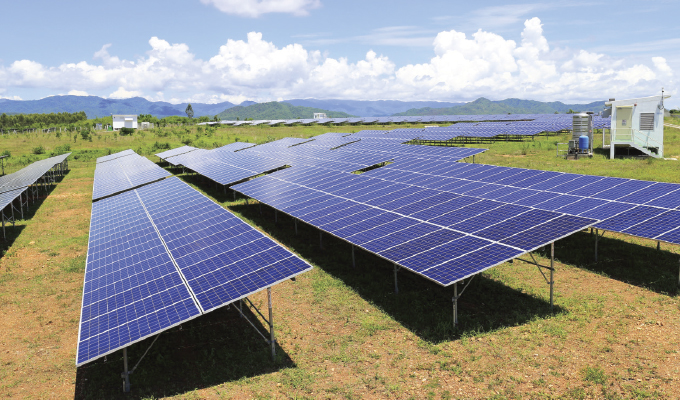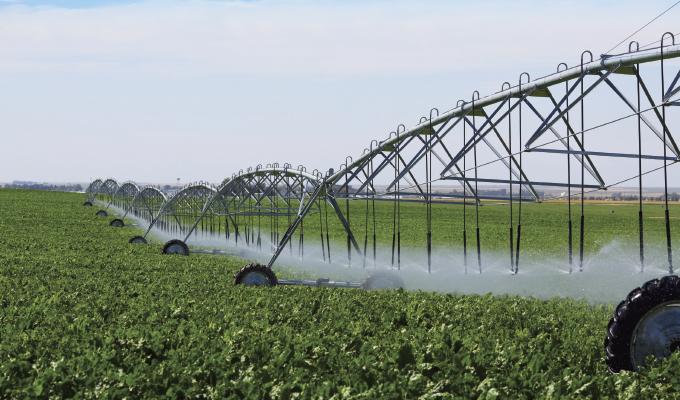By Namrata Dave
Rapidly changing agricultural technology combined with constant improvement in farm machinery is leading to wide adoption of energy efficient centrifugal pumps, creating pressure and flow in the irrigation system. Solar powered water pumping system in agriculture is gaining popularity as an alternative to grid electricity. The modern agricultural system has led to the growing demand for irrigation solutions that reduces energy cost, improves productivity and safeguards water resource. Moreover, reduction in the price of solar panel and components in solar power system is driving the adoption of solar powered centrifugal pumps and emerging as an economically viable option for irrigation.
The growing concern towards wastewater treatment in the past few years has resulted in wide application of centrifugal pumps. Rising competitiveness in the market is resulting in the development of centrifugal pump technology leading to a better performance and reduction in the overall cost. From a design perspective, manufacturers of centrifugal pumps are focusing on improving the quality of shaft steel in the pumps to withstand vibration, fatigue, and stress. According to some industry experts, water shortage is likely to impact more than half of the world population by 2025. This is accelerating the wastewater treatment process across the countries.
Increasing energy cost and growing environmental awareness are motivating pump manufacturers to focus on developing energy efficient centrifugal pumps for the end-use industries. Moreover, centrifugal pumps operating at a high speed pumping a large amount of liquid consume more power. This is leading to the integration of economically feasible and reliable solar power in the centrifugal pumping system.
Long product life and low maintenance cost of solar powered centrifugal pumps are emerging as the perfect alternative to other pumping systems. Industries are considering various factors while selecting a pumping system such as pump lifecycle cost including initial cost, maintenance cost and energy cost. On an average, centrifugal pumps can consume around 60 percent of motor energy in the facility resulting in higher energy and maintenance cost.

INCREASING FOCUS ON ENERGY EFFICIENCY
In the recent years, with an increasing cost of energy worldwide, energy efficiency is gaining attention from governments and pump manufacturers across countries. Despite various challenges, pump manufacturers are adding sustainable design features, enhancing productivity, quality, and services.
Solar powered centrifugal pumps have gained popularity and are available on a large scale in the developed countries. However, the high initial cost of solar powered centrifugal pumps as compared to the cost of fuel powered pumps is the main obstacle for solar pumps in developing countries. This is driving the pump manufacturers in the developing regions to design next generation, cost-effective solar powered centrifugal pumps, eliminating the need for grid connection or fossil fuel.
Use of solar photovoltaic technology for centrifugal pumping system has gained immense popularity. Continuous reduction in solar cells cost is likely to drive the application for centrifugal pumps powered by the solar photovoltaic system in agriculture and other industries.
With an aim to save the energy cost, replacement and refurbishing of the pumping system in water and wastewater treatment industry is on the rise. There has been a rise in the adoption of centrifugal pumps powered by solar energy in this industry.
Driven by rapid industrialization and urbanization, municipal water and wastewater industry in emerging countries is creating growth opportunities for centrifugal pumps manufacturers. However, manufacturers are facing a flood of new competition due to the increasing demand for energy efficient pumps and stringent regulations. According to the American Hydraulics Institute, around 30 percent of the total electrical energy consumed by pumping systems can be saved by developing a highly efficient system and using appropriate pumps.
First generation PV pumping systems using centrifugal pumps have shown significant advancements in the recent years. The current solar powered pumping technology uses electronic system by further increasing the output power, performance and efficiency. PV modules account for nearly 60 to 80 percent of the total cost of PV system, a significant decline in the cost of PV modules across various regions have also reduced the overall cost of the pumping system. Moreover, an increase in the cost of crude oil, diesel, and gasoline has made solar powered pumps financially attractive.
There exists immense growth opportunity for centrifugal pumps in wastewater, pharmaceuticals, food and beverage, and chemical industries, as the sectors are set to grow at a stable pace in the near future. However, centrifugal pumps demand will continue to be hit by the nuclear power generation, mining, and oil and gas sectors, which are likely to experience slow growth.

ENERGY EFFICIENCY VIA IMPROVED CONTROLS
Modern pump control systems are gaining traction in pump automation using field sensors. Advanced solar powered centrifugal pumps are being designed to replace the need for diesel and grid power. Integrated self-managing system are also being developed for monitoring and management. Sensors are largely used in centrifugal pumps to access real-time data, and remotely manage and monitor pumps.
In terms of automation of solar powered centrifugal pumps, researchers are focusing on developing and integration of wireless technologies. This can lead to automatic irrigation using sensors in agricultural systems. The aim of providing wireless sensors in solar powered centrifugal pumps is to reduce piping and wiring cost, and offer easy to install and maintain pumps, especially in large areas. However, the biggest challenge is the high initial cost.
Other technologies including sun tracking system, DC-to-DC power converter to charge batteries safely and feed motor and automation system with a soil moisture sensor and RF modules are being developed to drive centrifugal pumps that are used to transfer water in irrigation, providing automatic drip irrigation. Easy to install, low maintenance, no fuel cost, simple, and reliable are some of the factors making solar powered centrifugal pumps suitable for agriculture and wastewater treatment.
Major players in the market are introducing cost-effective solar powered centrifugal pumps. An increasing number of Chinese players are manufacturing low-cost, solar powered centrifugal pumps, owing to the expected rise in massive population relocation, driving the demand for pumps used in the wastewater treatment industry and power generation.
However, the level of penetration of mid and small-sized manufacturers in the centrifugal pumps market has remained low. Players in the market have been facing a rise in the input prices leading to rising cost and decreasing margins. Meanwhile, the presence of a large number of small and mid-sized players, offering low-cost pumps are putting immense pressure on larger players. Local and regional manufacturers have started venturing into the global market. The emphasis is on developing energy-efficient solutions.
Developing countries in Asia Pacific continue to be the backbone of centrifugal pumps market. Rising number of food processing units are creating opportunities for centrifugal pumps in the food and beverages industry in the region. Meanwhile, strong competition and fluctuating commodity prices in the past few years have led to the rise in mergers and acquisitions, with large centrifugal pump manufacturers acquiring small companies.
Increasing cost and degradation of non-conventional sources has made it mandatory for industries to move towards conventional sources, such as solar, to produce electricity to run centrifugal pumps. It is evident that the demand for energy-efficient pumping solutions is likely to increase in the near future with the rise in high water consuming sectors.
FOR MORE INFORMATION
Siemens Digital Industries Software, a business unit of Siemens Digital Industries, is a leading global provider of software solutions to drive the digital transformation of industry, creating new opportunities for manufacturers to realize innovation. With headquarters in Plano, Texas, and over 140,000 customers worldwide, we work with companies of all sizes to transform the way ideas come to life, the way products are realized, and the way products and assets in operation are used and understood. For more information, visit www.sw.siemens.com.
The insights presented here are from a research study on Reciprocating Pumps Market by Fact.MR. Namrata Dave is a market research report writer with experience of over five years in B2B writing. She has been instrumental in contributing to Fact.MR’s industrial goods domain, where has coordinated with subject matter experts to create comprehensive studies. She can be reached at namrata@fact.mr.com.
MODERN PUMPING TODAY, September 2019
Did you enjoy this article?
Subscribe to the FREE Digital Edition of Modern Pumping Today Magazine!



